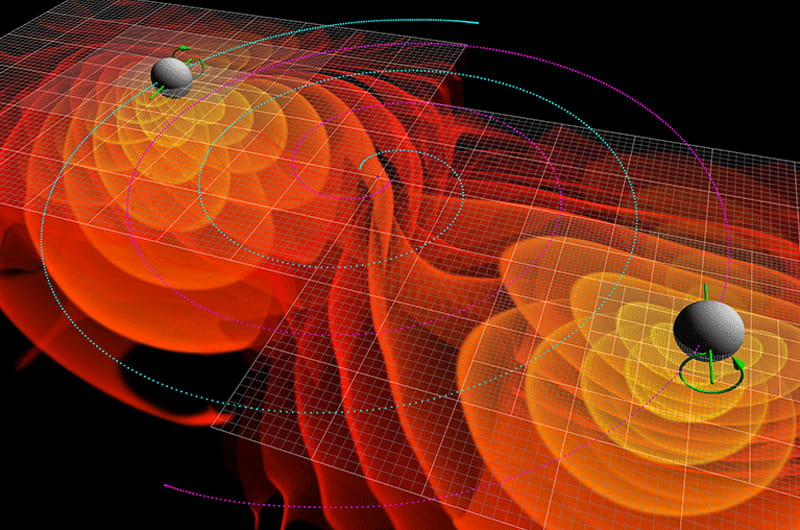Building Toward Discovery: Drexel Professor’s Role in Finding Gravitational Waves
 By Frank Otto
By Frank Otto

- Drexel Selects New, World-Class Life Sciences Building at 3201 Cuthbert Street for Medical Research Operations
- Breakthrough on Gene Therapy for Hereditary Spastic Paraplegia
- Drexel Environmental Collaboratory Releases Cross-Sector Findings on Severe Weather Recovery Challenges
- Drexel Launches the Manuel Stamatakis Center for Alternative Investments at the LeBow College of Business

When talking about his contributions to science, Isaac Newton said, “If I have seen farther, it is by standing on the shoulders of giants.”
The quote refers to the process that makes up the backbone of scientific study: The steady building of research that eventually leads to game-changing discoveries.
With the recent discovery of gravitational waves by the LIGO Scientific Collaboration, their scientists confirmed one of the predictions made by Albert Einstein decades ago when he set out his theory of relativity.
But while the LIGO group certainly stands on Einstein’s shoulders, there’s another set of shoulders that helped them “see farther”: Stephen McMillan’s.
McMillan, PhD, professor in Drexel’s College of Arts and Sciences and department head of Physics, published a paper back in 2000, when LIGO was first constructing its antennae to listen for the waves, titled “Black Hole Mergers in the Universe.” In the paper, co-authored by Simon F. Portegies Zwart, then of Boston University, a procedure was laid out for calculating how many black hole binaries could be created and scaling that number up to the galaxy and universe levels.
“Back in 2000, the gravity wave community were pretty desperate for something they’d be able to observe. We wrote this paper when the LIGO people were grasping at straws,” McMillan recalled. “We looked at neutron star mergers and black hole mergers, which are most likely to occur in star clusters. We developed the procedure to make estimates for scale. We put together the methodology that a lot of other papers used.”
When they began their work, McMillan said he wasn’t sure if there would even be anything measurable, even by LIGO. But they set out to just “improve our understanding” of the science of black hole binaries.
As it turned out, their work gave the LIGO group an idea of what signals they could look for to record the existence of the waves. The 2000 paper by Portegies Zwart and McMillan was cited in the paper LIGO put out to confirm their discovery.
But that’s not to say that the duo was given a heads up on it.
“I was a little surprised,” McMillan laughed. “I had just finished a phone conversation with Simon saying they probably wouldn’t cite us. But one of my colleagues in the Physics department read their paper and pointed it out to me.”
The discovery of gravitational waves is exciting to everyone in physics, McMillan said. And he’s happy to have been a part of the process for this discovery that began with Albert Einstein.
“This is a whole different type of radiation,” McMillan said. “This is an alternate way of viewing the universe. Any time you have a new type of medium, it’s remarkable how much information can be extracted.”
In This Article
Contact
Drexel News is produced by
University Marketing and Communications.